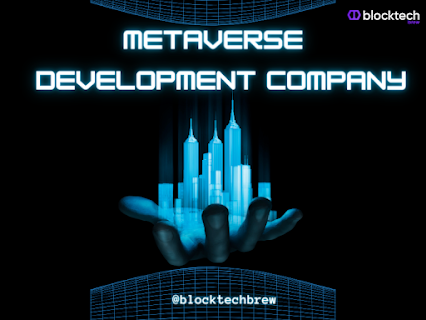How Much Does It Cost to Build the Metaverse?
Introduction
The concept of the Metaverse has gained significant attention in recent years, driven by advancements in virtual reality (VR), augmented reality (AR), and blockchain technologies. The Metaverse is often described as a virtual universe where people can interact, socialize, work, and play in a shared digital space. As this vision of a fully immersive and interconnected world becomes more feasible, one question arises: how much does it cost to build the Metaverse?
Defining the Metaverse
Before diving into the costs, it's essential to understand the scope and complexity of the Metaverse. The Metaverse is not a single project or platform but a concept encompassing a vast array of interconnected virtual worlds, applications, and services. It is an ecosystem that requires collaboration among various stakeholders, including developers, designers, content creators, and infrastructure providers.
Factors Affecting the Cost
Infrastructure: Building the Metaverse necessitates robust technical infrastructure capable of supporting vast numbers of concurrent users and delivering seamless experiences. This includes server farms, data centers, networking, cloud services, and content delivery networks (CDNs). The cost of establishing and maintaining this infrastructure can be substantial.
Software Development: Creating the software and platforms that power the Metaverse is a complex and iterative process. It involves designing and implementing immersive environments, user interfaces, social networking features, real-time communication tools, and security systems. The cost of software development will depend on the size and expertise of the development team, the complexity of the features, and the time required for development and testing.
Content Creation: The Metaverse relies heavily on engaging and diverse content to attract users. This includes 3D models, virtual environments, interactive experiences, games, virtual goods, and digital assets. The cost of content creation will depend on the quantity and quality of the content, the skill level of the creators, and the tools and software required.
User Acquisition and Marketing: Just like any other platform or service, the Metaverse will require marketing and user acquisition efforts to reach a critical mass of users. These costs will include advertising campaigns, influencer partnerships, community management, and customer support.
Security and Privacy: Building a secure and trustworthy Metaverse is crucial to ensuring user safety and protecting digital assets. Implementing robust security measures, such as encryption, authentication systems, and anti-fraud mechanisms, will add to the development and operational costs. Compliance with privacy regulations may also necessitate additional investments.
Integration with Emerging Technologies: The Metaverse may leverage emerging technologies like virtual reality headsets, augmented reality devices, haptic feedback systems, blockchain, and artificial intelligence. Integrating these technologies into the Metaverse ecosystem will require additional investments, partnerships, and expertise.
Cost Estimates
Due to the diverse nature of the Metaverse and its ongoing development, it is challenging to provide an exact cost estimate. The expenses associated with building the Metaverse can range from millions to billions of dollars, depending on the scale and ambition of the project.
For instance, major technology companies like Facebook (Meta), Microsoft, and Epic Games are already investing heavily in building their versions of the Metaverse.
These companies have the resources to allocate significant budgets to research, development, and infrastructure.
However, the Metaverse is not limited to large corporations. It offers opportunities for startups, independent developers, and content creators to contribute to its development. The costs for smaller-scale projects will vary depending on the scope and goals of the individual undertaking.
Conclusion
Building the Metaverse is an ambitious and multifaceted endeavor that requires substantial investment in infrastructure, software development, content creation, marketing, security, and integration with emerging technologies. The costs associated with constructing the Metaverse can range from millions to billions of dollars, depending on the scale and complexity of the project. It's worth noting that these estimates are subject to change as technology evolves and new opportunities and challenges arise.
While the cost of building the Metaverse may seem daunting, it's important to recognize the potential economic benefits it can bring. The Metaverse has the potential to revolutionize industries such as entertainment, education, healthcare, e-commerce, and more. It can create new revenue streams through virtual goods and services, advertising, and monetization models tailored to the virtual world.
Furthermore, the development of the Metaverse is not solely the responsibility of large corporations. The democratization of technology and the rise of decentralized platforms and blockchain-based ecosystems provide opportunities for smaller players to contribute to the Metaverse's growth. Crowdfunding, open-source collaboration, and decentralized governance models enable a more inclusive and diverse ecosystem.
In conclusion, the cost of building the Metaverse can be significant, requiring substantial investment in infrastructure, software development, content creation, marketing, security, and emerging technologies. However, the potential economic and social benefits make it an exciting area for exploration and innovation.
As the technology advances and the ecosystem matures, we can expect a broader range of opportunities and cost-effective solutions for individuals and organizations to contribute to the development of the Metaverse. The journey towards building the Metaverse is a collaborative and iterative process, driven by the collective efforts of various stakeholders, and its ultimate cost will depend on the shared vision and investment made by those involved.




Comments
Post a Comment